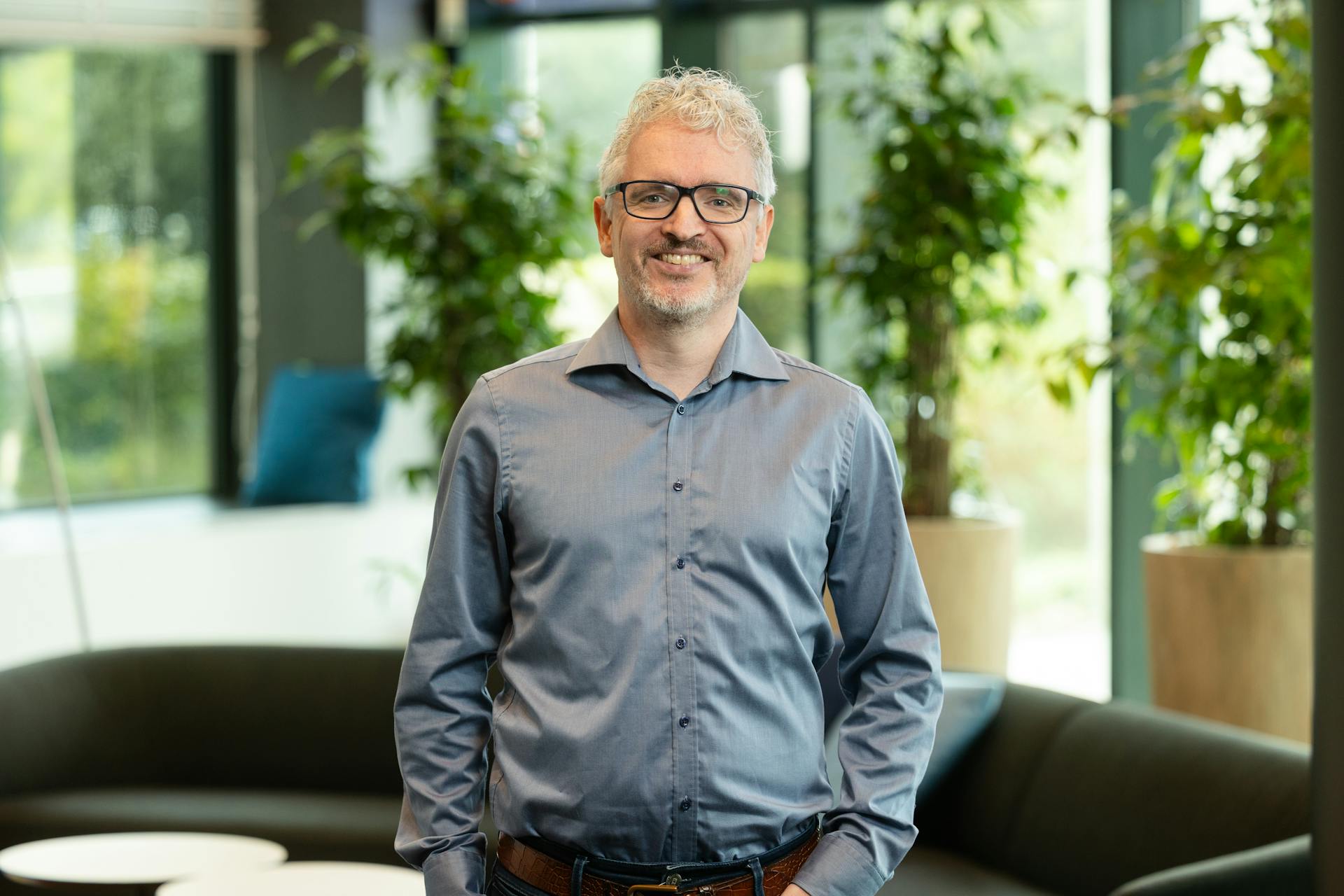How Can Supply Chains Turn Disruption Into a Competitive Advantage?
In this interview, ORTEC Principal Consultant and AI supply chain specialist Chuck Ng and supply chain strategist Jos Heijmans explain how companies can not only prepare for unpredictable market changes, but also turn these challenges into advantages. Their approach blends agility with resilience through AI, digital twins, and scenario planning to strengthen four critical planning dimensions:
- Strategic Network Design
- Demand Planning
- Supply Planning
- S&OP/IBP Integration
Sluggish population growth, rapidly shifting consumer preferences, climate change and environmental disasters, persistent inflation, and geopolitical tensions are making growth and profitability less of a given. On top of that, consumer goods supply chains are also facing pressure from trade barriers, import tariffs, and raw material shortages.
By embracing scenario planning, deploying advanced tools like AI and digital twins, and adapting organizational structures, companies can withstand disruptions and turn them into opportunities. Chuck Ng, Principal Consultant and IT/AI expert regarding supply chains, and Jos Heijmans, supply chain expert at ORTEC, underscore that agility is about preparation, adaptability, and resilience: “Think of agility as a muscle you train.” The better prepared you are, the faster you can adapt.
“The question isn’t whether something will occur, but how quickly you can respond when it does,” says Jos Heijmans. Agility requires more than flexibility; it’s a strategic capability that forces companies to rethink and reorganize. Companies must not only respond to change, they must anticipate it and adapt at lightning speed to stay competitive.
“Everyone sees the market is full of disruptions and risks that can have major negative impacts,” Jos notes. “That makes preparation absolutely critical.”
For Chuck Ng, the lesson from recent years is clear: “Everything used to be lean – cut costs, minimize inventory, optimize every cent. But that leaves your supply chain incredibly vulnerable. One small disruption, and everything grinds to a halt. Agility means anticipating, preparing for multiple scenarios, and being able to pivot when needed.”
Assume that everything is always in flux, and plan, decide, and organize accordingly.
Shifting to an Agile, Resilient Supply Chain Mindset
The urgency is especially acute in the consumer goods sector. “This industry depends on global suppliers and markets that can shift overnight,” says Chuck. “A sudden embargo, a new tariff, or even a shift in consumer behavior—and your entire supply chain has to adjust.”
To both experts, agility means a shift in mindset, from ‘reactive’ to ‘anticipatory’. “We live in an era of constant uncertainty,” says Chuck. “You have to change your default setting. Assume that everything is always in flux, and plan, decide, and organize accordingly.”
Preparing for Multiple Supply Chain Scenarios
Jos: “Agility doesn’t mean you have to predict everything. It means you’re prepared for different outcomes. You’ve mapped out scenarios, built flexibility into your processes and network. You don’t wait until something happens. You’re ready for when it happens.”
That also requires a cultural shift, Chuck says: “You need an organization that’s used to thinking in alternatives. Where experimentation and iteration are encouraged. Where not every decision has to take weeks. You can’t be agile if all decisions run through one central team. That just doesn’t work in a world where you need to course-correct daily. Agility requires trust in your people and the processes that support them.”
We often see agility fail because decision-making is too slow. That needs to change.
What are the Four Key Planning Dimensions of an Agile Supply Chain?
Chuck and Jos see four key planning dimensions where agility is critical: strategic network design, demand planning, supply planning, and the integration via S&OP and IBP.
Strategic Network Design for Supply Chain Resilience
“Network design used to be all about cost,” says Jos. “Now you also need to factor in risk, sustainability, and supply certainty. What if region X becomes unavailable? What if imports from country Y are banned?”
Tools like ORTEC Supply Chain Design or AIMMS Supply Chain Navigator help simulate these scenarios. “They show the impact of an alternative network. Not just financially, but in terms of lead time, carbon footprint, and service levels,” Jos explains.
Jos shares an example: “One client was serving Northern Europe entirely from Southern Europe. We modeled a scenario with a distribution center in Germany. The result? Faster time to market, lower transport costs, and more resilience.”
Anticipating Customer Demand with AI and Forecasting Models
Demand planning is the next pressure point. “The market shifts incredibly fast. Consumers want something different today than they did last month,” Jos says. “You need forecasting models that can keep up.”
Chuck: “AI lets you combine massive datasets, such as internal figures, external signals, and consumer trends. That gives you much earlier visibility into shifts. More importantly, it lets you act on them.”
Jos: “Companies that integrate external data into their demand forecasting – like weather, campaigns, or social sentiment – consistently perform better. Embracing that complexity is key to rapid response.”
Building Flexible Supply Planning Strategies for Resilience
On the supply side, flexibility is vital. “You need to be able to reroute material flows if something goes wrong,” says Jos. “Flexible supplier contracts, dynamic inventory management, even alternative raw materials, these are all tools for agility.”
Chuck shares a flex sourcing example: “One client had always worked with a single supplier per material. Now they have two or three suppliers per material, each covering 40–60% of volume. That gives them room to scale or switch quickly.”
Integrating Strategic and Operational Supply Chain Decisions via S&OP and IBP
Finally, integration through S&OP and IBP is essential for cohesive planning. “S&OP shouldn’t be a slow, bureaucratic process that delays action,” says Chuck. “Planning needs to be dynamic and responsive. That’s where IBP comes in. It extends S&OP by linking strategic goals to operational execution.” Jos adds: “Imagine you need to revise your Q4 market targets due to a looming recession. That change must cascade quickly into production, logistics, and procurement plans. IBP enables that kind of rapid alignment – if the process is well-structured and cross-functional.”
A digital twin doesn’t just give you insight — it gives you confidence. You’re more likely to act quickly. And speed is everything in a crisis.
How Do AI and Digital Twins Accelerate Supply Chain Agility?
AI and digital twins are promising tools that accelerate agility. But Chuck cautions against the hype. “AI isn’t a magic bullet. You need to ask the right questions: What do you want to know? What decisions are you trying to support?”
Still, the potential is significant. “AI can detect risks in real-time, run scenarios automatically, and speed up decision-making,” says Jos. “That’s hugely helpful during a crisis.”
Chuck sees even more potential in digital twins: “A live, digital replica of your supply chain, continuously fed with real-time data. You can compare scenarios instantly, monitor risks, and translate decisions into action. Success doesn’t come from plans that are right, but from plans that can adapt."
But it’s a journey, he acknowledges. “Most companies aren’t there yet. You start by building a reliable baseline, training your people, and adapting your processes.”
Jos adds: “A digital twin doesn’t just give you insight – it gives you confidence. When your data is solid and you know your options, you’re more likely to act quickly. And speed is everything in a crisis.”
What Role Does Organizational Culture Play in Supply Chain Agility and Fast Decision-Making?
Without organizational change, there can be no agility, Jos stresses. “Analyzing scenarios is easy. Making and implementing decisions? That affects people, processes, governance.”
Chuck sees many companies struggle here. “Who decides? Who runs the analyses? If different departments work with different assumptions, you’re stuck. You need consistent data, clear roles, and fast decision-making.”
That means decentralization. “Local teams need the power to act,” says Jos. “If a planner in Region A sees a supplier go down, they should be able to pivot, without climbing three management layers first.”
Chuck: “The classic pyramid of strategy on top and operations below is too slow. In agile organizations, strategy and operations overlap. That means shorter feedback loops and a different setup.”
How Can an Organization Move Towards a Fully Adaptive and Agile Supply Chain?
Agility is not a one-off project; it’s a permanent capability. “Think of it as a muscle you train,” says Jos. “Start by mapping your network, identifying vulnerabilities, and developing scenarios.”
Chuck sees an evolving role for consultants. “AI handles a lot of the analytics, but people are still needed for interpretation. We help clients go from data to decisions. Not just using the tools, but shaping the direction.”
Agility isn’t a buzzword. It’s a requirement for staying competitive. Or as Jos puts it: “Success doesn’t come from plans that are right, but from plans that can adapt.”
Chuck concludes: “The winners of tomorrow aren’t the ones who predict the most. They're the ones who respond the fastest. Agility isn’t optional. It’s strategy. The question is: how ready is your supply chain to respond?”
Frequently Asked Questions on Supply Chain Agility and Resilience
In our conversation with ORTEC experts Chuck Ng and Jos Heijmans, several key themes emerged around building agile, resilient supply chains in the face of constant change. This FAQ highlights their insights on scenario planning, AI, digital twins, and organizational culture, offering clear answers to common questions.
What does agility mean in supply chains according?
“Agility is about preparation, adaptability, and resilience: ‘Think of agility as a muscle you train.’ The better prepared you are, the faster you can adapt,” says Chuck Ng, Principal Consultant and IT/AI expert regarding supply chains.
How can scenario planning improve supply chain resilience?
“Agility doesn’t mean you have to predict everything. It means you’re prepared for different outcomes. You’ve mapped out scenarios, built flexibility into your processes and network. You don’t wait until something happens. You’re ready for when it happens,” says Jos Heijmans, supply chain expert at ORTEC.
What role does AI play in improving demand planning?
“AI lets you combine massive datasets, such as internal figures, external signals, and consumer trends. That gives you much earlier visibility into shifts. More importantly, it lets you act on them,” says Chuck Ng.
How do digital twins accelerate agile supply chain decisions?
“A live, digital replica of your supply chain, continuously fed with real-time data. You can compare scenarios instantly, monitor risks, and translate decisions into action,” explains Chuck Ng.
Why is organizational culture critical for supply chain agility?
“You need an organization that’s used to thinking in alternatives. Where experimentation and iteration are encouraged. Agility requires trust in your people and the processes that support them,” says Chuck Ng.
Are You Ready to Build a More Resilient Supply Chain?
Let's talk about how you can partner with ORTEC to build a supply chain designed to withstand disruptions and turn them into opportunities.




